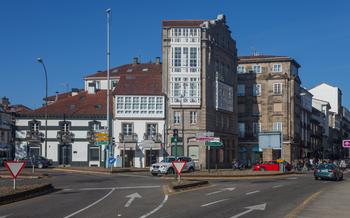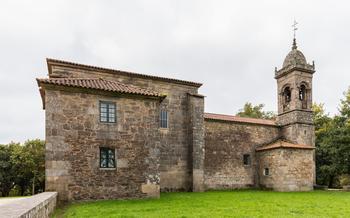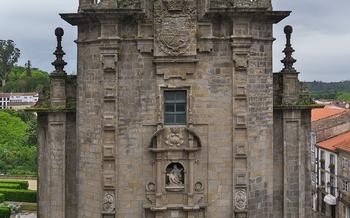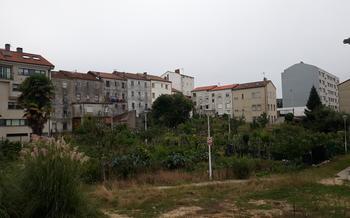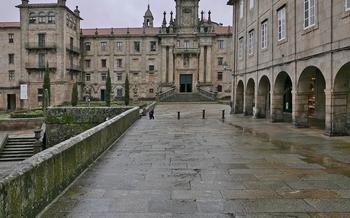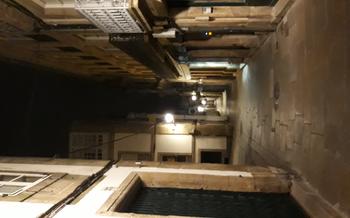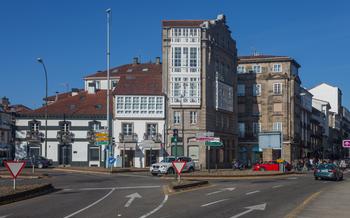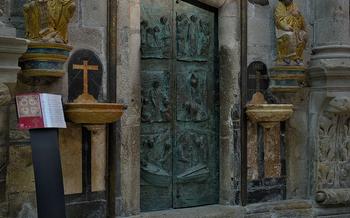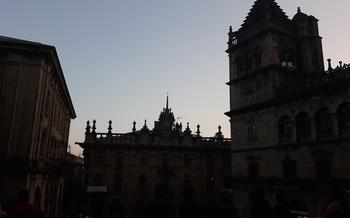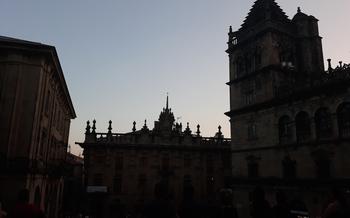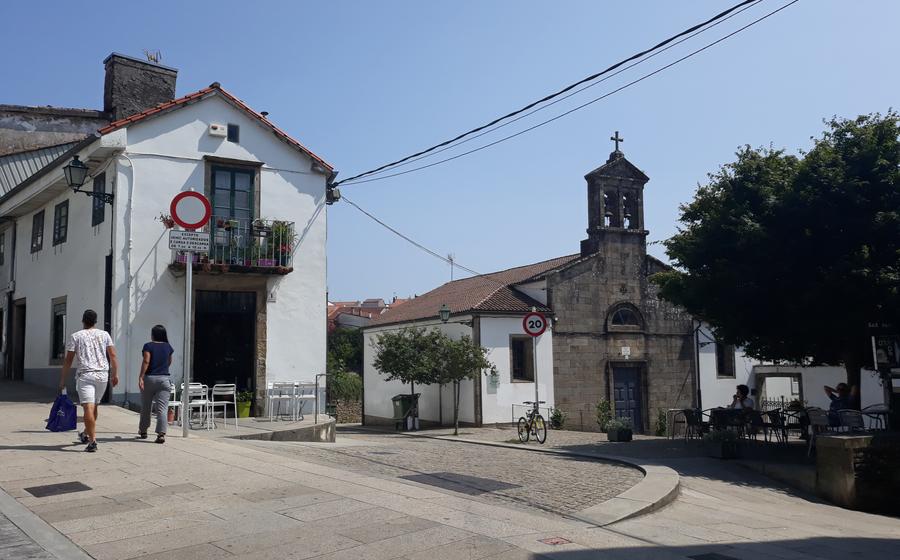
Monumento a las Marías Tribute to two local sisters
- Historical Significance of the Corral Sisters
- Exploring the Monumento a las Marías
- The Legend of the Corral Sisters: Local Folklore and Cultural Significance
- Casa de las Marías: A Legacy of Care
- Pilgrims and the Monumento a las Marías
- Local Celebrations and Events
- Literary and Artistic Depictions
- Contemporary Relevance and Social Impact
- Tourism and Pilgrimage
- Virtual Tours and Online Resources
- Accessibility and Practical Information
- Local Cuisine and Dining
- Souvenirs and Mementos: Preserving the Legacy
- Insider Tip: Hidden Gems
Historical Significance of the Corral Sisters
The Corral sisters, María Josefa and1807 and 1809, respectively. From a young age, they displayed a deep sense of compassion and empathy, which would shape their remarkable journey.
Growing up in a challenging environment, the sisters witnessed firsthand the hardships and suffering faced by the city's most vulnerable residents. This exposure ignited within them a desire to make a difference in the lives of those in need.
In 1854, Santiago de Compostela was hit by a devastating cholera outbreak that claimed the lives of thousands. Amidst the chaos and despair, the Corral sisters emerged as beacons of hope and resilience.
With unwavering dedication, they tirelessly worked to alleviate the suffering of the sick and dying. They visited hospitals, provided care to the afflicted, and offered comfort to the grieving families. Their selfless acts of kindness and compassion earned them the admiration and gratitude of the entire city.
Recognizing the urgent need for long-term support, the Corral sisters established the Casa de las Marías orphanage in 186This institution provided shelter, education, and vocational training to orphaned and abandoned children, offering them a chance at a brighter future.
The sisters' unwavering commitment to helping those in need left an enduring legacy in Santiago de Compostela. Their story continues to inspire generations, serving as a testament to the transformative power of compassion and selflessness.
Exploring the Monumento a las Marías
The Monumento a las Mar
Crafted from granite, the monument features two life-size bronze statues of the sisters, their arms outstretched in a gesture of compassion and care. The sisters' serene expressions and attentive gazes evoke their unwavering dedication to helping those in need.
The monument's pedestal is adorned with intricate carvings depicting scenes from the sisters' lives, including their tireless work during the cholera outbreak. These carvings serve as a visual narrative, capturing the essence of their humanitarian efforts and the profound impact they had on the community.
Inscriptions in both Galician and Spanish adorn the monument, paying tribute to the sisters' virtues and their unwavering commitment to serving others. These inscriptions offer a glimpse into the deep admiration and respect held for the Corral sisters by the people of Santiago de Compostela.
The Legend of the Corral Sisters: Local Folklore and Cultural Significance
In the hearts and minds of Santiago de Compostela's residents, the Corral sisters have transcended the realm of historical figures to become legendary figures woven into the fabric of local folklore. Countless tales and anecdotes have been passed down through generations, immortalizing their extraordinary deeds and miraculous interventions.
One enduring legend speaks of the sisters' ability to heal the sick and perform miracles. Stories abound of individuals who were miraculously cured of illnesses or injuries after seeking the sisters' intercession. Their reputation as healers and miracle workers spread far and wide, attracting pilgrims and locals alike to seek their blessings and assistance.
The belief in the sisters' sainthood is deeply ingrained in the local culture. While the Catholic Church has not formally canonized them, many locals regard them as saints, venerating them for their unwavering compassion, selflessness, and unwavering faith. Their legacy continues to inspire and uplift the community, serving as a reminder of the power of love, kindness, and service to others.
The story of the Corral sisters is deeply intertwined with the cultural identity of Santiago de Compostela. Their unwavering dedication to helping those in need has left an indelible mark on the city's ethos, fostering a spirit of compassion, solidarity, and social responsibility. To this day, the sisters remain beloved figures, revered for their extraordinary contributions and the enduring legacy they left behind.
Casa de las Marías: A Legacy of Care
The Casa de las Founded in 1871, the orphanage was their brainchild, a response to the staggering number of orphans left destitute in the wake of the cholera epidemic that ravaged Santiago de Compostela in the mid-19th century. Driven by their unwavering compassion, the sisters dedicated their lives to providing shelter, food, and education to these vulnerable children.
Over the years, the orphanage expanded, reflecting the sisters' unwavering commitment to helping those in need. They tirelessly raised funds, sought donations, and worked tirelessly to ensure that every child under their care had access to a safe and nurturing environment. The orphanage became a beacon of hope for countless children, offering them a chance to rebuild their lives and reach their full potential.
To this day, the Casa de las Marías continues to operate, carrying on the legacy of the Corral sisters. It remains a vital institution in Santiago de Compostela, providing support, education, and a loving home to children in need. The orphanage stands as a testament to the sisters' boundless compassion and their unwavering belief in the power of love and kindness to transform lives.
Pilgrims and the Monumento a las Marías
For pilgrims walking the Camino de Santiago, the Monumento a las Marías holds a special significance. As unwavering dedication to helping others resonates deeply with pilgrims who have embarked on their own transformative journeys.
The monument invites pilgrims to pause, reflect on their own motivations and challenges, and seek strength from the sisters' example. It is a place where pilgrims can find solace, offer prayers, and draw inspiration from the sisters' unwavering commitment to serving those in need. Many leave behind personal offerings, such as candles, flowers, or handwritten notes, as a testament to their gratitude and connection to the Corral sisters.
Personal stories abound of pilgrims who have been touched by the legacy of the Corral sisters during their Camino journey. Some recount experiencing a sense of peace and renewed purpose after visiting the monument, while others share stories of seemingly miraculous interventions or guidance they received along their way. For many pilgrims, the Monumento a las Marías becomes a symbol of the transformative power of faith, compassion, and the human spirit.
Local Celebrations and Events
The city of Santiago de Compostela holds various celebrations and events throughout the year to honor the Corral sisters and their enduring legacy. These events showcase the community's pride in their local heroines and foster a sense of unity and remembrance.
One of the most significant events is the annual Fiesta de las Marías, held on October 24th, the sisters' feast day. During this festival, the city comes alive with vibrant processions, traditional music and dance performances, and special masses held at the Monumento a las Marías. Locals and pilgrims alike gather to pay homage to the sisters and celebrate their extraordinary contributions to the community.
Other events include the Romería de las Marías, a pilgrimage held in May, where devotees carry a statue of the sisters from the city center to the Monumento a las Marías, located in the outskirts of Santiago de Compostela. This procession is a moving display of faith and devotion, as participants seek blessings and offer prayers to the Corral sisters.
Additionally, the city organizes cultural festivals and exhibitions throughout the year that incorporate the sisters' story and legacy. These events often feature local artists, musicians, and historians who share insights into the lives and work of the Corral sisters, ensuring their memory remains alive in the hearts of the community.
Literary and Artistic Depictions
The story of the Corral sisters has captivated the hearts and minds of artists and writers throughout history. Their selfless acts and unwavering dedication to helping those in need have inspired literary works, poems, and stories that continue to circulate among locals and visitors alike.
In the realm of visual arts, paintings and sculptures depicting the sisters adorn museums and galleries in Santiago de Compostela. Local artists have used their talents to immortalize the sisters' likeness and capture their compassionate spirits.
The Corral sisters' legacy has also influenced contemporary art installations and murals that grace the city's streets. These public artworks serve as a reminder of the sisters' profound impact on the community, keeping their memory alive for generations to come.
Contemporary Relevance and Social Impact
The legacy of the Corral sisters extends far beyond the confines of Santiago de Compostela. Their story continues to inspire individuals and organizations working in social welfare and community service across the globe. Their unwavering commitment to helping those in need serves as a powerful reminder of the transformative power of compassion and empathy.
In contemporary society, where issues of social justice and gender equality are at the forefront, the Corral sisters' story resonates deeply with activists and advocates. Their selfless acts of charity and their unwavering dedication to improving the lives of vulnerable children make them icons of social progress.
The sisters' legacy has inspired numerous initiatives and projects aimed at addressing current social challenges. Their story has been used as educational material in schools and universities to teach values of compassion, empathy, and service to others. Their names have also been invoked in campaigns promoting gender equality and women's empowerment.
By embodying the principles of selflessness, compassion, and service, the Corral sisters continue to inspire and motivate individuals and organizations working to make a positive impact on the world. Their legacy serves as a reminder that even the smallest acts of kindness can have a profound and lasting impact on society.
Tourism and Pilgrimage
The Monumento a las Marías holds significant importance for pilgrims embarking on the Camino de Santiago. Situated along the pilgrimage route, the monument serves as a beacon of inspiration and a reminder of the selfless spirit that guides their journey. Its proximity to the city center makes it a popular stop for pilgrims seeking a moment of reflection and connection with the sisters' legacy.
Beyond its religious significance, the monument has become a tourist attraction in its own right. Visitors from around the world come to admire its architectural beauty and learn about the extraordinary story of the Corral sisters. The monument stands as a testament to the enduring power of compassion, selflessness, and the transformative impact of individuals who dedicate their lives to serving others.
Virtual Tours and Online Resources
In the digital age, the Monumento a las Marías and the story of the Corral sisters are accessible to a global audience through virtual tours and online resources. Visitors can embark on a virtual pilgrimage, exploring the monument and its surroundings in 3D from the comfort of their homes. Historical archives, such as the Archivo Histórico de la Universidad de Santiago de Compostela, provide access to digitized documents, photographs, and records related to the sisters and their charitable work. Social media platforms, including Facebook and Instagram, offer glimpses into the monument's current status and share engaging content about the sisters' legacy. Interactive websites and apps, like the Camino de Santiago app, feature quizzes, storytelling experiences, and historical information related to the Corral sisters, making their story accessible and interactive for a tech-savvy audience.
Accessibility and Practical Information
Location and Directions: The Monumento a las Marías is conveniently situated in the heart of Santiago de Compostela, at the Praza de Mazarelos. Visitors can easily reach the monument on foot from the city center, following the Rúa do Franco and turning left onto the Praza de Mazarelos. Alternatively, public transportation options such as buses or taxis can be used to arrive at the monument's doorstep.
Visiting Hours: The monument is accessible to the public 24 hours a day, allowing visitors to admire its beauty and pay their respects at any time. However, it is worth noting that the monument is not staffed, and there are no guided tours or specific visiting hours.
Accessibility Features: The Monumento a las Marías is wheelchair accessible, ensuring that visitors with disabilities can comfortably explore the monument. Ramps and elevators are available to facilitate access to the monument's various levels, and audio guides are provided for those who need assistance with navigation or historical context.
Guided Tours: While the monument itself does not offer guided tours, visitors can opt for guided tours of Santiago de Compostela that include a stop at the Monumento a las Marías. These tours, led by knowledgeable local guides, provide a comprehensive overview of the city's history, culture, and landmarks, including the story of the Corral sisters and their enduring legacy.
Local Cuisine and Dining
After exploring the poignant Monumento a las Marías, take a culinary journey through Santiago de Compostela's vibrant food scene. Indulge in traditional Galician cuisine at local restaurants or cafes near the monument. Savor regional specialties inspired by the Corral sisters or named in their honor, such as the heartwarming "Caldo de las Marías," a comforting soup that embodies their nurturing spirit.
Visit local markets to immerse yourself in the flavors of Galicia. Browse stalls laden with fresh produce, artisanal cheeses, and cured meats. Purchase ingredients to create a picnic feast, savoring local delicacies while admiring the monument from a nearby park or outdoor area. This culinary adventure not only nourishes the body but also connects you with the rich cultural heritage of Santiago de Compostela.
Souvenirs and Mementos: Preserving the Legacy
Local artisans and craftsmen have created unique souvenirs and handicrafts inspired by the Corral sisters, allowing visitors to take a piece of their legacy home. These mementos range from intricate pottery and hand-painted ceramics to delicate jewelry and woven textiles. Visitors can also purchase books, guidebooks, and publications about the sisters and their remarkable contributions to Santiago de Compostela. Commemorative items such as postcards, stamps, and magnets featuring the Monumento a las Marías are also available, serving as tangible reminders of their enduring story. By supporting local artists and purchasing these souvenirs, visitors can not only cherish their memories of the Corral sisters but also contribute to the preservation of their legacy and the vibrancy of the local creative community.
Insider Tip: Hidden Gems
Beyond the monument itself, discover a hidden gem nestled nearby—a serene garden with a breathtaking view of the city. Take a moment to pause and reflect on the sisters' legacy while immersing yourself in the beauty of Santiago de Compostela.
Local Stories:
Uncover the fascinating story of a local family who claims to have a direct connection to the Corral sisters. Hear firsthand accounts of miracles and divine interventions attributed to the sisters, passed down through generations.
Off-the-Beaten-Path Experiences:
Venture off the beaten path to explore the charming neighborhood where the sisters lived and worked. Discover hidden alleys, quaint cafes, and local shops that have preserved the spirit of their time.
Local Traditions:
Participate in the annual procession held in honor of the Corral sisters, where locals gather to pay tribute and carry their effigies through the streets of Santiago de Compostela. Experience the deep devotion and gratitude the community feels towards these remarkable women.
